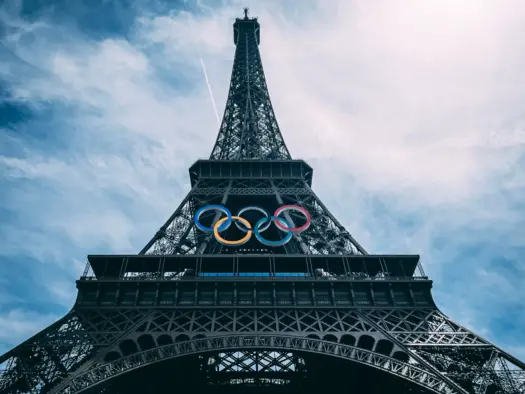News publishers are likely to have missed out on digital advertising revenue from the Olympics due to outdated keyword “blocklists” that have included the word “Paris” since terror attacks in the city nine years ago. According to the team at Reach’s publisher contextual ad solution Mantis , just 43% of Olympics content between the start of the games until 13 August for publishers not using their platform was classified as “brand safe”. Mantis came up with this figure after comparing published online work with known blocklists used by the advertising industry.
Mantis said 92% of Olympics content for publishers using its platform was classified as brand safe. As well as Reach. Mantis is also used by Radio Times owner Immediate Media.

The remaining 8% not classed as brand safe included stories about the Dutch volleyball player convicted of child rape. Blocklisting, a word created by combining blocking and blacklist, is when brands and advertising agencies use keywords like “attack” and “shooting” to stop their campaigns appearing alongside any content that contains them. This means, for example, that football content can lose potential advertising when what brands really wanted to avoid was having their campaigns alongside hard news stories that create negative emotions in readers.
Reach created Mantis in 2019 as its own attempt to tackle the issue. Fiona Salmon, managing director at Mantis , said: “The increase in brand safe inventory during the Olympics, and the chance to advertise near high-profile athletes and celebrities such as Adam Peaty, Andy Murray, and Simone Biles should be a no-brainer for any brand, but far too often imprecise keyword blocklists cut them off from these perfectly safe ad placements. “It’s hard to pinpoint exactly how many brands are still utilising these blanket lists because every brand will have a differing approach to safety, but from the blocklists of a number of large agencies and clients that we have seen, this is no small issue.
“While there is a logic to many of the phrases that are blocked – they may have certain negative connotations or relate to a negative story such as a terrorist attack – the lack of nuance that these tools possess means that they drastically hamper advertising efforts.” The Euros, held in June and July, also represented a missed opportunity, Mantis said, as it estimated that up to 70% of brand-safe publisher content was not being utilised by advertisers for much of the tournament. This is due to the blanket blocklisting of phrases like “shootout” or “attack”.
Similarly for the general election words used to describe the Conservative Party ‘s defeat such as “disastrous” were on some blocklists. For the Olympics, Salmon said, brands could have missed out on inventory due to content with the word “Paris” in it being blocked if they put it on their blocklists after the 2015 terror attacks. Salmon said: “A number of events in recent years have caused increases in the usage of blocklists – Covid , the death of Queen Elizabeth II, and terror attacks.
While these may keep advertisers away from potentially harmful content for the duration of these events, a lack of ongoing attention to the contents of blocklists means that advertisers are cut off from reaching coverage with these keywords even after any brand safety issues have passed.” Salmon explained that despite some awareness of the issue and pruning of blocklists, it has not been enough: “We have seen some headway from agencies in reducing the size of keyword blocklists, but often brand specific ones are left untouched for long periods. “It is not uncommon that an agency-wide blocklist is applied alongside a brand-specific one, and while an agency one may have been reviewed this quarter, the brand-specific one often has not.
Furthermore, it is not uncommon that an agency-wide blocklist is applied alongside a brand-specific one, creating discrepancies amongst content flagged as safe.” She added: “Ultimately, overcoming this challenge comes down to education around the limitations of these blunt brand safety tools and how more nuanced AI-powered brand safety solutions can help brands more effectively reach audiences while staying safe.” Publishers have therefore begun “taking the situation into their own hands” by “embracing brand safety tools that are able to more effectively understand the context of their content through AI”, Salmon said.
News UK has just become the first publisher to launch a partnership with contextual AI platform Illuma with the aim of reducing the amount of its content that is classed as unsafe. The tool, called Nucleus Narr(ai)te building on the name of its first-party data platform Nucleus , is said to have better tagging accuracy . This means for example that boxing content containing the words “hit” and “punch” are no longer tagged irrelevantly as “death and injury”, opening up content about the sport and its highly engaged users for better-targeted advertising.
Another example is that Narr(ai)te has separated out news reporting it considers to be about “sensitive social issues” instead of unfairly bundling it into the “hate speech” category. Proof of concept testing is said to have shown an average increase in brand safe inventory across News UK ‘s online brands, including The Sun and The Times, of 16%. Charlie Celino, News UK’s head of strategic development, said: “This latest extension to the Nucleus suite of products uses cutting-edge AI to answer a core problem for publishers – how to accurately and efficiently tag content for advertisers at scale.
Working with Illuma we can now offer agencies and brands more precisely categorised tagging, enabling more effective contextual targeting and greater brand safety. “What’s important for us as a publisher is that the more nuanced understanding that Narr(ai)te offers means that we can open up large areas of content that might traditionally been wrongly labelled as brand unsafe. This enables advertisers to access more highly-engaged audiences via our trusted, quality journalism.
” Early testing is said to have meant an average increase in segment accuracy of 10% across News UK’s online brands. Verticals said to have benefitted the most so far at The Sun include beauty and skincare (accuracy up 25%), travel (12%) and tech (11%) while at The Times it is sport (up 20%), autos (up 16%) and retail (up 13%). Richard Reeves, managing director of the Association of Online Publishers, said: “Brand safety is an ongoing issue, one with complex nuances, but this market solution demonstrates an enhanced approach to contextual tagging practices; a way to truly understand content – benefiting all parties and driving a healthy digital media ecosystem.
” Email [email protected] to point out mistakes, provide story tips or send in a letter for publication on our "Letters Page" blog.



















